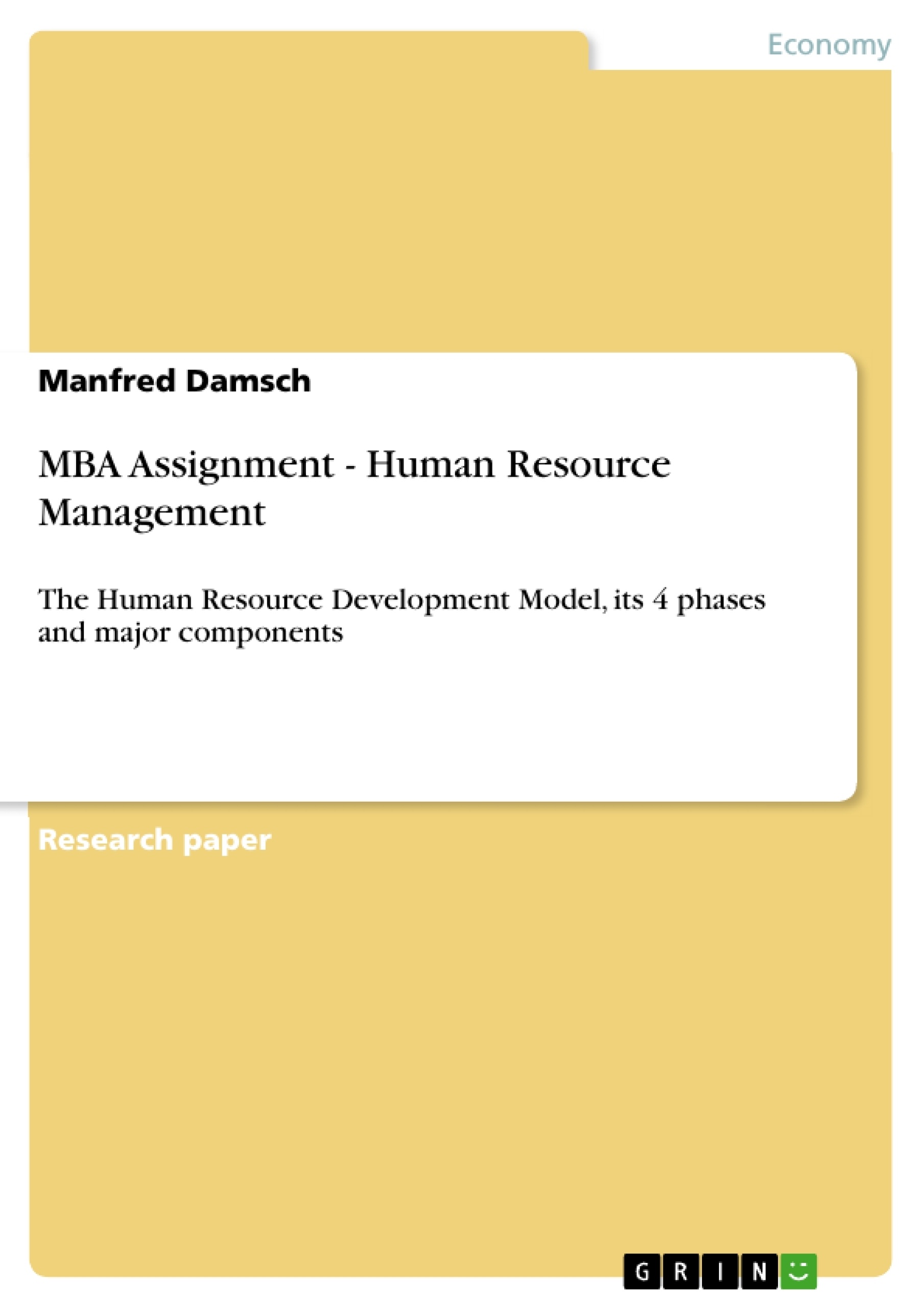Responsibilities within Human Resource Management are many-layered and complex not at least because of interdependencies from the company’s goals, visions and strategy. This means that there is a very close relationship between the management and HR. Beside this, HR also stands for the human needs and has to find the balance between those two indeed divisive views, always with the target ahead to make the company most efficient.
For being most efficient by transferring and enabling the staff to fulfil the company’s targets it is helpful to set up and run along a model, which is aligned with the management and transparent to the organisation.
The Human Resource Development (HRD) model helps align management’s operational goals with employee concerns. Transparent to the organisation, this model supports processes for meeting operational targets while simultaneously empowering the staff.
Table of Contents
Executive Summary
List of Abbreviations
List of Figures
1 Introduction
2 Problem Definition
3 Objectives
4 Methodology
5 The four Phases of HRD
5.1 Needs Analysis
5.2 Design
5.3 Delivery
5.4 Evaluation
5.5 The complex interaction of HRD
7 The Siemens HRD System (EFA)
8 Conclusion
Bibliography
Further Sources
Appendix 1: ITM Checklist
Executive Summary
Responsibilities within Human Resource Management are many-layered and complex not at least because of interdependencies from the company’s goals, visions and strategy. This means that there is a very close relationship between the management and HR. Beside this, HR also stands for the human needs and has to find the balance between those two indeed divisive views, always with the target ahead to make the company most efficient.
For being most efficient by transferring and enabling the staff to fulfil the company’s targets it is helpful to set up and run along a model, which is aligned with the management and transparent to the organisation.
The Human Resource Development (HRD) model helps align management’s operational goals with employee concerns. Transparent to the organisation, this model supports processes for meeting operational targets while simultaneously empowering the staff.
List of Abbreviations
illustration not visible in this excerpt
List of Figures
Figure 1 (The four phases of HRD)
Figure 2 Competency-Oriented HRD (Andreas Schmidt, Professional-Learning.eu)
1 Introduction
Aside from cash and other material values, a company’s worth is also defined by its staff, i.e. the number of employees, their skills and capabilities. Even though it’s controversy discussed in the HR-specific literature[1], it’s just fair to say, the staff is the human capital of a company.
Thus, the purpose of strategic HRD must be to keep employee’s qualifications always up to date and to prepare them for future requirements resulting from strategy changes of the company or just to stay competitive.
However, the purpose of HRD is a very debating issue, many different opinions are discussed: Is HRD simply purposed to focus on economic and social benefits or is it related to training, development and learning within organisations[2] ?
HRD is very close linked to team development and organizational development and derives its orientation directly from the company’s vision and targets.
This paper focuses on the practical definition and application of HRD in an organisation with a specific view on significant strategic changes with direct impacts on the organisation and the human resources such as restructuring and downsizing.
2 Problem Definition
The only constant in life is change: The world changes, economic conditions change, companies change and must change if they are to survive. Employees must also adapt their work styles, behaviours and expectations. Even in stable conditions, employees must adapt career plans with age, job requirements and other influences. Human Resources and management[3] are tasked with supporting and managing change in most efficient and effective way.
3 Objectives
The goal of human resource development is therefore to describe and standardise a system of guiding the staff in this process over time. This paper recommends a model based on 4 major phases of Human Resource Development where corporations should address change management.
[...]
[1] such as articles in the Harvard Business Manager Magazine Leitl, M. (2007) and Bassi and McMurrer (2007)
[2] Woodal et al. 2004, P16
[3] Note that HRD is not just the responsibility of HR departments, which in some companies maz have more of an administrative and advisory function, but also a part of manager responsibilities
- Citar trabajo
- Manfred Damsch (Autor), 2008, MBA Assignment - Human Resource Management, Múnich, GRIN Verlag, https://www.grin.com/document/134441
-

-

-

-
¡Carge sus propios textos! Gane dinero y un iPhone X. -

-
¡Carge sus propios textos! Gane dinero y un iPhone X. -

-
¡Carge sus propios textos! Gane dinero y un iPhone X. -

-
¡Carge sus propios textos! Gane dinero y un iPhone X. -

-
¡Carge sus propios textos! Gane dinero y un iPhone X. -

-
¡Carge sus propios textos! Gane dinero y un iPhone X.

